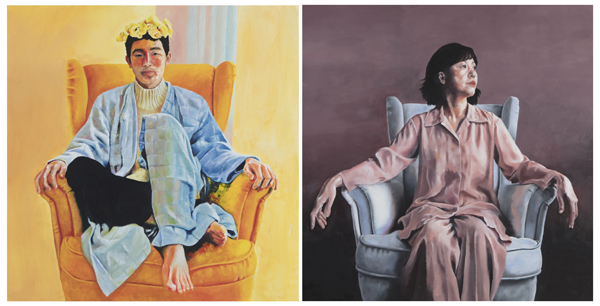The Art Gallery of Western Australia’s (AGWA) Year 12 Perspectives 2017 gives a voice to artists completing Year 12, as they navigate the twenty-first century and portray their identities through art. In this way, the Perspectives agenda is certainly fulfilled.
In this exhibition, anxiety residing within the artists is tangible, informing their engagement with their society and self. This show, however emblematic of young artists’ perspectives, establishes an over-simplified dialogue between artist and viewer.
The banal ‘white cube’ approach is what audiences have come to expect from AGWA and it highlights the problematic continuity of this show’s concern for palatability over intensity.
Despite the white cube, the most successful aspects of the exhibition lay in its thematic display, a presentation dictated by such a variety of artists and themes. This arrangement successfully and necessarily creates relationships between pieces and spaces, and such an eclectic aesthetic also facilitates a cognitive acceptance of the miscellany of perspectives.
As viewers are funnelled through the gallery, they navigate areas dedicated to societal perception, seen in Zoë Sydney’s Morning Ritual, which explores the process of preening with an Edward Hopper tone; social engagement; time, such as in Louise Wilson’s understanding of the inextricable and transient relationship between stages of growth in Malleable Memory; and culture. Themes seem to flow between each other in this well-proportioned arrangement; standing alone, they would seem isolated, but arranged in this thematically intimate way, they are connected.
The thematic message imposed by such an arrangement saves the exhibition from existing as a jumble of works tenuously tied together. The intensity established through the thematic hang is simultaneously applaudable and problematic; whilst it enhances the show, the fact that this arrangement shapes the viewer’s interpretation of the pieces suggests that the artworks have limited individual intensity. Problematically, the positive aspects of the exhibition lay in its display, not the artworks. It is contentious whether such problems are curatorial or concern the artists’ brief.
In an exhibition by young people, it was disappointing to see few mediums contemporaneous to the demographic; the quantity of paintings overwhelmed newer mediums like projection or video. This might reflect AGWA’s concern for palatability. However, there is a disconcerting lack of rawness in the artworks. Artists instead relied on formal elements to communicate messages, which prioritises aesthetics over nuanced meanings. One stand-out piece excepted, Nikki Coleman’s Penthesilia, where the literal cross-stitching of mythology and illness is sewn onto a large breast cancer ribbon, most pieces hasten to blurt their purpose instantaneously rather than develop a meaningful narrative. This is disappointing, considering the ambitious polemic ideas explored, and speaks to the surface level nature of the artworks. This lack of nuance may be a consequence of an agenda to communicate a particular message such that other concepts are lost, or perhaps because AGWA has pursued only technical and palatable pieces.
This exhibition has many problems, but given the importance of youth engagement in social justice, a space that channels this is a good thing. Both AGWA and the artists have admirable objectives, but if the demands of palatability continue to override the construction of dialogues between artist and viewer, the goals of the institution and artist will remain unrealised.
‘Year 12 Perspectives 2017’ will continue to be an exhibit at the Art Gallery of Western Australia from the 17 March – 16 July 2018.
Stirling Kain | @stirlingkain

